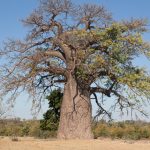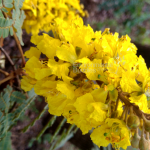Pod Mahogany
Botanical Name: Afzelia Quanzensis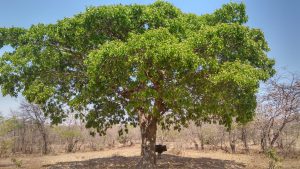
English: Pod Mahogany
Shona: Mukamba/Mugogoma/ Mugoriondo/ Mujarakamba/ Mungwingwi
Ndebele: Ihlene/umkamba
Habitat
Afzelia quanzensis occurs in a wide variety of habitats, in dry evergreen forest, open woodland and scrub forest, up to 1350(–1800) m altitude. It prefers deep, well-drained, sandy soils, and is also found on termite mounds. It does not tolerate waterlogging. It is often
Description
The pod mahogany is a medium to large, deep-rooted, deciduous tree that may grow up to 35 m high, with a large spreading crown.

Bark: It’s somewhat straight trunk may be up to 1 m in diameter and has a grey-green or creamy grey, smooth bark that is beautifully patterned with raised rings that flake off irregularly, leaving circular patches.
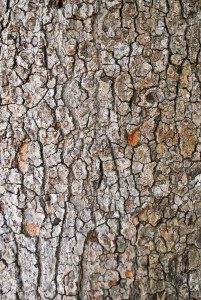
Leaves: The new leaves, which are alternating, are usually copper-coloured and attractively glossy. They become dark green as they age. They are up to 300 mm long and are divided once, with 4-7 pairs of leaflets.
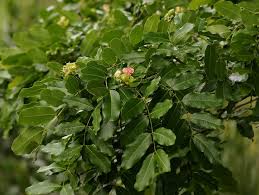
Fruit: a large flattened pod, thickly woody, 10-17 cm, splitting to reveal large seeds. It contains up to 10 black seeds which are released when the pod splits. Fruiting is from April to August.
Seeds: The seeds which are black and red are used for ornaments like necklaces and earrings.
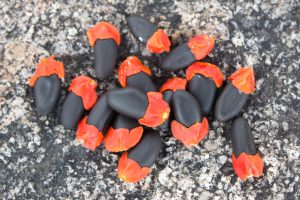
Flower: The Flowers grow in clusters and are sweet smelling. They flower from July to November.
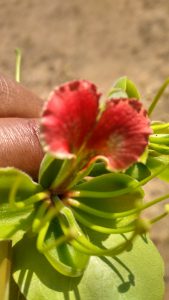
Uses
Medicinal Uses
- The infusion of roots provides a remedy for bilharzia and eye complains.
- Washing in an infusion of the bark and roots which has been soaked overnight is believed to bring a hunter good luck
- The powdered bark mixed with one’s own body oil is said to ward off attacks or provocation by others.
- Root decoctions or macerations are taken to treat schistosomiasis, stomach-ache, gonorrhoea and snake bites, and as aphrodisiac.
- Root pulp is applied externally to treat rheumatism.
- Bark decoctions are drunk against malaria, pneumonia, uterine complaints, threatened abortion and snake bites.
- Bark is applied externally to treat skin complaints, toothache and gum bleeding.
- Leaf sap is taken against malaria and a leaf filtrate is dropped into the eyes to treat conjunctivitis.
- Roots are used as an ingredient in the preparation of dart poison
Other uses
- The bark and leaves are eaten by elephants and the leaves are browsed by eland and duiker.
- The sweet smelling flowers attract a myriad of insects which in turn attract birds.
- The dropped flowers are eaten by game and the seeds by rodents.
- Larvae of most charaxes butterflies feed on the leaves of this tree. These include giant, large blue, blue-spotted and golden piper charaxes.
- The wood is used in the building trade for beams, plywood and paneling. It can also be used for furniture and musical instruments. It is termite and borer resistant. Many of these trees are used to make railway sleepers.
- Seeds of this tree are in great demand for ornaments and charms. They are often used as necklaces or made into trinkets and sold as curios.
- Used for firewood and charcoal production.
- The roots are associated with ectomycorrhizal fungi.
- Apiculture: The fragrant flowers are visited by insects such as bees, which serve as pollinators.
PROPAGATION
Seeds of Afzelia quanzensis germinate easily, usually with a rate of up to 80%. Soak seeds in water for 24hours. Sow the next morning in seedling trays filled with a mixture of river sand and compost (3:1). Cover the seeds with a thin layer of sand and keep moist. Transplant the seedlings into nursery bags filled with a mixture of river sand and compost (5:1) when they reach the 2-leaf stage. Germination may take two to three weeks. They should be kept protected for the first two seasons in cold areas, as they are frost sensitive. During the first years, growth of seedlings is fair, 50–60 cm in height per year. After about 7 years, young trees developed a distinct bole and a spreading crown. Diameter growth of the bole is slow, 0.5–3 mm/year.
Seeds that are as old as ten years may still germinate if stored in a cool, dry place.



